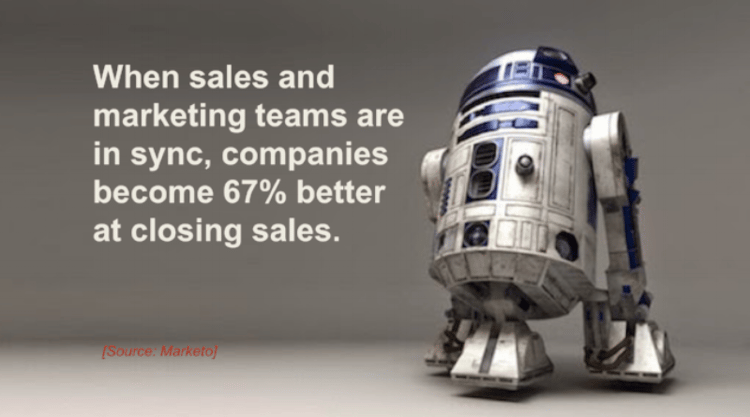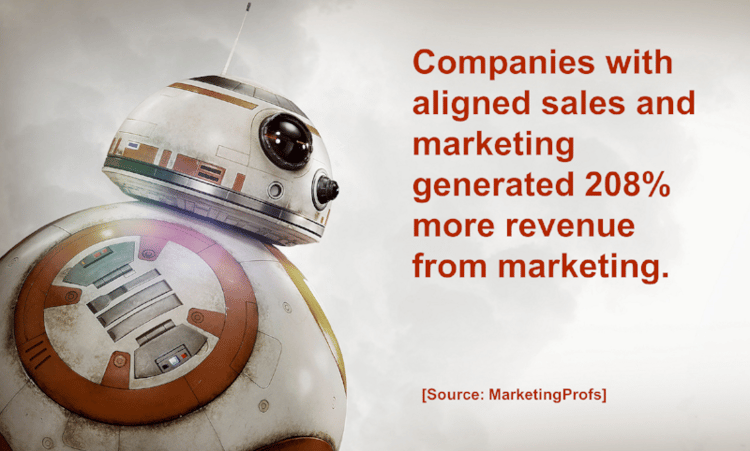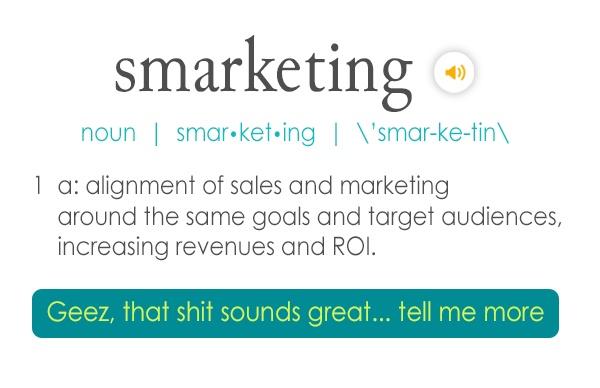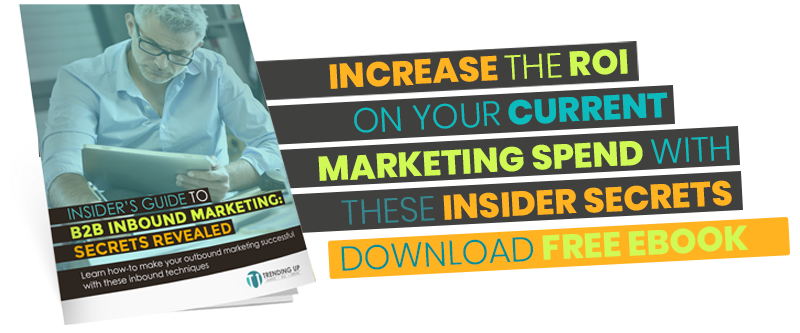Happy Star Wars Day, everyone! Yep, it's a real thing, and yep, we're celebrating here at Jül. Not only did we host a themed webinar today on the force of inbound smarketing, I'm also bringing you the best of the best advice from Star Wars - in GIF format. Normally, people think that marketing for B2B companies has to be kind of boring, straight-laced, and rigid. Not so, fans! In fact, that was our first episode today - Episode IV: Know Your Target. Here's a recap of the important smarketing lessons we touched on today.
First, some things to consider:
- How well do your sales and marketing teams work together?
- Is there a clear goal and target for both teams to aim at?
- Is there a defined hand-off process between marketing and sales - from your website through close?
If you’ve answered ‘no’ to any of these questions, I have some sage wisdom from Yoda for you: "That...is why you fail."

Here's why you need smarketing, courtesy of our two favorite droids (sorry, C3PO):
 Photo courtesy of Lucasfilms, LTD.
Photo courtesy of Lucasfilms, LTD.
When sales and marketing teams are in sync, companies become 67% better at closing sales. [Source: Marketo]
 Photo courtesy of Lucasfilms, LTD.
Photo courtesy of Lucasfilms, LTD.
Companies with aligned sales and marketing generated 208% more revenue from marketing. [Source: MarketingProfs]
But how do you achieve smarketing at your organization? Patience, young Padawan. I will teach you the ways of The Force.
Episode IV: Know Your Target
First, you need to know your target. Marketers refer to these target audiences as “buyer personas.”
A buyer persona is a fictional representation of a real buyer or group of buyers, including identifying key aspects of the buyer’s life, pain points, challenges, goals, geography, demographics, and preferred communication methods.
Most companies will have several buyer personas, typically between 3-9. They are, in short, the ideal people you want to buy from you. Each buyer persona is going to have different objections for you, they will have different personalities and different goals. You need to personalize their buyers journey weather they are on your website or speaking to your sales team. For my Star Wars-themed example, check out the recording around the 7:00 mark.
Still not caring so much about personas?
Look at it this way:
You can’t effectively reach your buyers out there if you haven’t done research on them. How will you connect and build rapport, trust and show your industry leadership if you know nothing about how to connect with him?
This goes hand and hand with personalization. Your customers are expecting a completely customized experience from the start. Whether they are on your website or speaking with you, you had better not waste their time. If Darth Vader (oops, gave it away) comes to your website and downloads content on a specific product you manufacture, next time they come back you better position a new whitepaper or checklist about the same product. You know what he is interested in, so give him what he wants.
Alright, so I've convinced you that buyer personas are necessary. But you're still questioning this whole smarketing idea.
Episode V: Join the Light Side with Inbound Selling
First, the Dark Side: there is a severe disconnect between buyers and sellers during the very first sales call. According to HubSpot research released earlier this year:
- 54-58% Buyers want to discuss pricing and how the product works.
- 61-63% Sales wants to talk about why buyers are buying.
- Sales thinks they’re listening to needs, providing value, and tailoring the pitch based on needs. Buyers disagree.
The reasons for this disconnect lies in the way that buyers have changed since the advent of the Internet.
- Buyers hold the power. They’re incredibly well-informed and are overly confident in what they know. They aren’t interested in catering to a qualifying script. They want to lead the conversation.
- Buyers see salespeople as gatekeepers – not advisors.
- There is a trust deficit. Only 41% of buyers see sales as a trustworthy or somewhat trustworthy source of information. That's a huge gap.
Old school sales is focused on meeting quotas by a deadline, and selling the most widgets to the most customers.
Inbound Selling: Selling the way that prospects buy, and applying the methodology of inbound to selling, focusing on bringing the potential customers to you and supporting them through active listening and tailored answers. There are three main steps:
- Create a positive buying experience.
- Advise; don't sell.
- Create a buyer-centric experience.
When you apply the inbound selling method to your sales follow-through, and the inbound marketing method to your website and marketing materials, you'll see the changes in your bottom line.
So, how do sales teams evolve into Jedi Masters of Inbound?
EPISODE VI: Evolution of Sales to Jedi Master Status
A Jedi Master of Inbound doesn’t bombard prospects with unnecessary, unwanted spam. She provides the prospect with educational information that the prospect needs. He actively asks questions and listens to the answer. They tailor their presentations and demonstrations to the prospect's exact pain points.
Think of the customer as Luke, and salespeople as Yoda. Yoda can guide Luke, train him, and give him all the advice in the world – but in the end, the decision to come back to the Degobah system to complete his training is Luke’s alone.
How does your sales team evolve into Jedi Masters of inbound selling, to guide their trainees to a successful outcome? Here’s how:
- Create tailored content. This content starts with your marketing team and continues with the sales team. Content tailored to industry, goals, and timeline of the buyer is paramount to success. When sales and marketing communicate, marketing can help create this tailored content at the right time, in the right format, for a seller to deliver to a prospect. Tailored content leads to better conversations, more goals met, and ultimately, more deals closed. That’s the ultimate smarketing goal!
- Actively ask questions. I recommend a minimum of three calls – a discovery, a diagnosis, and a demonstration – prior to closing a sale. This gives ample time to collect all possible information and tailor the final demonstration to the exact needs of the business.
- Be consultative. Base your entire sales process on the buyer, rather than the seller. This may or may not mean that your solution is the best fit; your honesty will gain the respect of the buyer at this point.
The final piece of advise I leave for you today: when it comes to inbound smarketing, do, or do not: there is no try. It's an investment of time and process change that is so worth it in the end, but cannot be half done.

Want more content like this? Visit our resource center! You can also check out this related content:






